The London Years of Designer Betty Joel
"“…the homes of this country would be better if the women, even those who are believed to have little taste, exercised such taste as they have, to decide what they themselves really like and see that they get what they want.”"
A House and A Home by Betty Joel, 1935
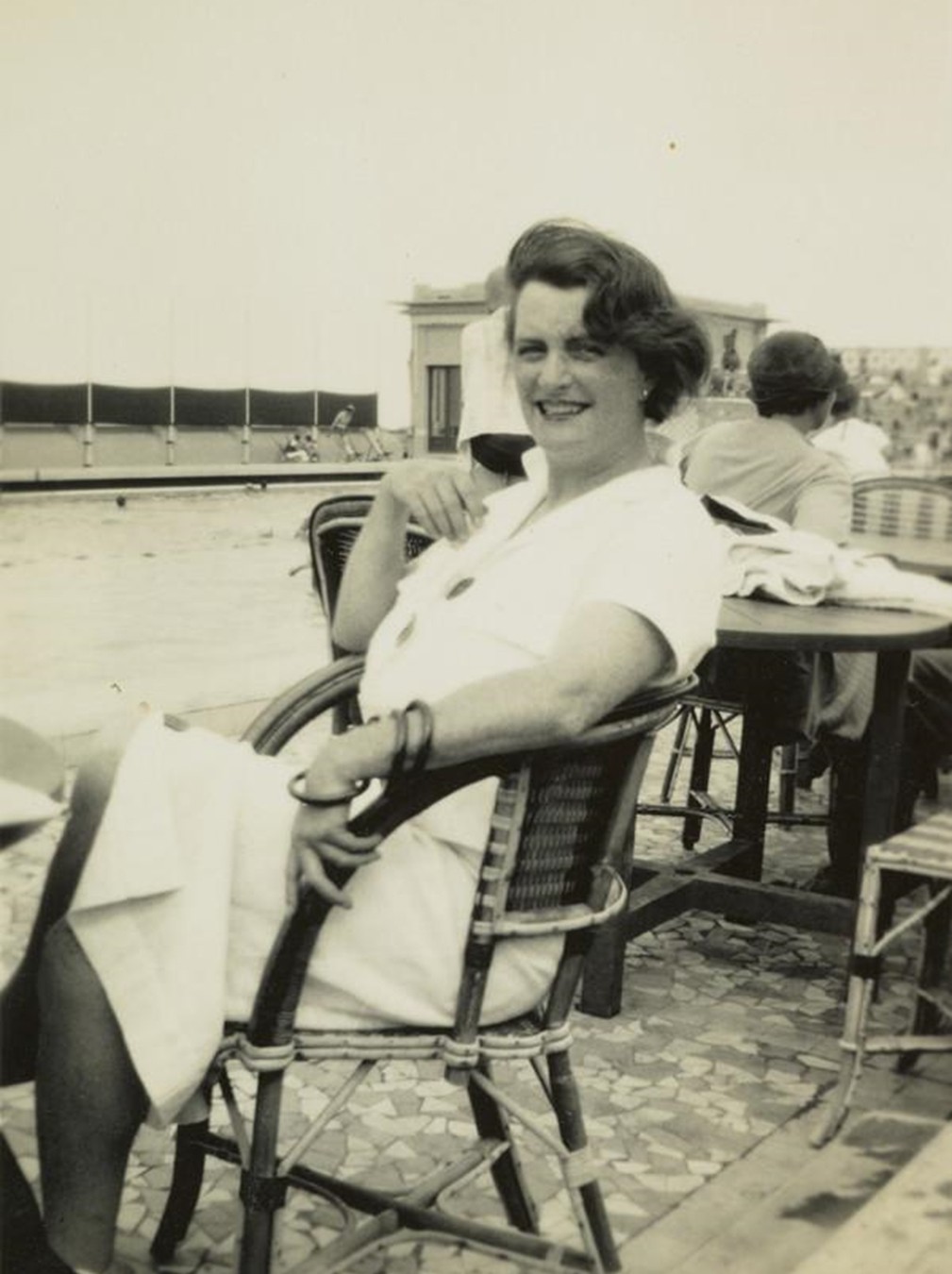
Betty Joel, nee Mary Stewart Lockhart (1894-1985) is perhaps not a name that is well-known when thinking about the history of design. This may be in part due to her reasonably short-lived career in the UK for the years c.1921 to 1937.
Mary was born in Hong Kong and moved to England with her husband David Joel after the First World War. They went into partnership manufacturing furniture from a workshop in Hayling Island, Hampshire, in 1921. The business was named after her nickname, Betty, to appeal more directly to women and she was indeed the driving force of ideas. Items were first retailed at a shop in 177 Sloane Street, Knightsbridge. This article will look at the period she was in London.
Key London Residences of the Joels
- 1924, their daughter Idina sadly died at the age of 7 months at 56 Hallam Street. The address where they were living was noted as 6 Creswell Gardens in South Kensington with Mary’s father J H Stewart-Lockhart.
- 1925 & 1927 electoral registers note Joel’s address as 36 Belgrave Mews North (which was rented when she had the premises at 177 Sloane Street and let go when the Joels took on 25 Knightsbridge which enabled them to showcase more items).
- In the 1929 electoral register Betty Joel is listed at 37 Belgrave Mews North with her husband David Norman Walter Joel (referred to as ‘the Mews’ in her diaries)
- A 1930 directory states that the premises at 25 Knightsbridge sold handmade furniture. They also made furniture for film and theatre and had exhibitions at this premises.
- In 1932, Betty Joel Ltd. rented a flat over Coutts Bank at 105-108 Park Lane for use as a showroom. This was visited by over 7,000 people that year. 'The walls were panelled in ‘silky oak’ and the furniture was of ‘silky oak’, steel and glass. The round mirror on the sideboard was a popular design which had three differently angled slots so that the mirror could be adjusted for use.' (Clive Stewart-Lockhart, Furniture Society Vol. LVIII, 2022, p23). An image from the exhibition flat is available on the Bridgeman website. The building on this site had been recently built in 1930-2 to the designs of Wimperis, Simpson and Guthrie in a neo-Georgian style. Betty Joel Ltd. panelling covered the walls inside Coutts Bank.
- 1935, Betty resided at a flat at 39 Hill Street, Mayfair. Interiors of the flat are available to view on the Historic England website. A building act case file at LMA (ref: GLC/AR/BR/22/BA/008455A) states that a new building of flats on [8] floors to be called ‘Waverhill Court’ was to be built at 39 Hill Street within 18 months from the date 4 December 1933. An interior of Betty’s flat at 39 Hill Street, Westminster (Grosvenor Ward) can be seen in file reference ACC/3499/SL/01/0700, in the English Heritage archive at LMA.
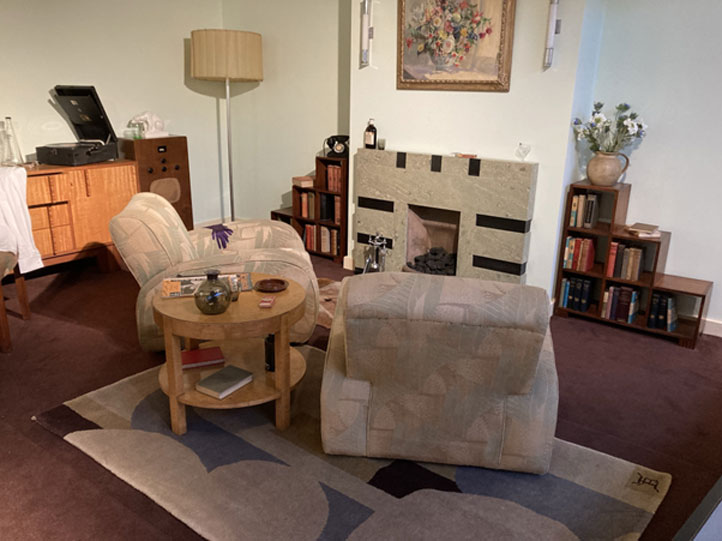
Modernism in the home
By the 1930s Art Deco had become the dominant style with its clean lines and curved edges. This modernist ethos imbued in design was to transform the space of the home and make comfort a desired outcome for the middle-classes. Labour-saving devices were being employed as electricity was becoming more readily available. What people wanted was new furniture for a new modern way of living.
Isabelle Anscombe’s book, 'A woman's touch: women in design from 1860 to the present day', reflects on how Betty Joel Ltd. furniture met the needs of the home in the 1930s:
'The typical Joel interior was cool, restful and casual, with plain floors and abstract rugs, smooth curved furniture in exotic woods, a few distinctive accessories, such as unadorned circular mirrors, and sometimes veneered walls, curved to meet the floor and ceiling. It had evolved from a quite personal vision of the modern interior, with the stress on easy-to-maintain furnishings for a woman without servants who did not wish to spend all her time at home.' (p169)
Betty Joel Furniture and Ethos
The company has been described by her great nephew, Clive Stewart-Lockhart, as, “arguably, the most significant London firm of furniture makers of the period.” (Furniture History, Vol. LVIII (2022), pp. 227–257)
With no formal design training and an understanding of the need for practical usability, this perhaps worked to their advantage in a market for everyday, easy to maintain furniture. The curvilinear shape was a feature of their style.
LMA holds a file within the archive of English Heritage (reference ACC/3499/SL/01/0700) containing the Survey of London research notes for Knightsbridge which remarks that,
'Betty Joel’s furniture, which has been described as marrying the style and forms of French Art Deco with British notions of sound construction, secured a wide range of corporate and private clients…The Joels also made-up furniture to the briefs of other designers and architects, including H.S. Goodhart-Rendel and Alister Maynard, undertook the design of shop interiors and exhibition stands, and commissioned and sold textiles and rugs.'
In, A House and A Home (1935), Betty writes:
'There is too much talk of beauty, and far too little attention given to the creation of beauty in our daily surroundings…'
The Old Home is Now the Newest (Weekly Despatch 3 February 1935):
'The other day a woman asked me to redecorate her house. We kept a good deal of the old furniture, and I added modern square-armed sofas and other things. The result is an excellent blend of the old and new, and what is more important, it is individual. And this new individuality need not be expensive.'
Token Furniture (Teak and Oak)
A unique creation of the brand was ‘Token’ furniture, which was a combination of teak (a hardwood species) and oak wood. Their first outing with this creation was to Olympia in 1922 with the theme: ‘The Dawn of a New Period in Furniture Design’.
'They employed yacht fitters to make simple, functional furniture in teak and oak to Betty Joel's own designs, and by the late 1920s had established a distinctive style, making use of simple, unadorned curved edges which, she said, echoed 'the Feminine form', abolishing all unnecessary mouldings and projections and introducing an innovative recessed drawer handle.' (The Times, 1 Feb 1985)
An entry from Betty’s diary in March 1928 (held at the National Art Library, extracts given with permission of Clive Stewart-Lockhart) refers to the use of this combined material, 'Mr L [Liddell] brought some samples of Australian woods. The silky oak, and mahogany wood samples I thought very fine. We are anxious to make up a set of TOKEN in these woods in view of the Duchess of York remarking to me at the Ideal Home Exhibition that ‘we ought to use Australian woods.’
Ideal Home Exhibition, Olympia, 28 Feb - 24 Mar 1928
The company took part in exhibition stands to showcase and promote their work. LMA holds a catalogue from the 1928 Ideal Home Exhibition at Olympia within the archive of Earl’s Court and Olympia (ref: LMA/4684/02/02/1928/002). On (p45) an entry for Betty Joel Ltd. is listed:
Stand 58 – Ground Floor, Main Hall
BETTY JOEL LTD. London Showrooms: Token House, 25 Knightsbridge, S.W.1. Workshops: Token Works, Hayling Island. Tel: Sloane 3831.
BETTY JOEL’S Furniture appears at this Exhibition for the seventh year in succession. The rapid increase in the demand for Token Furniture is stated to be due to this Exhibition, at which it was first shown to the public. Token House, number 25, Knightsbridge, just below Hyde Park Corner tube Station, has now been taken by Betty Joel and is being arranged so as to show a series of specimen rooms, furnished with Token Furniture. The essential features of Token Furniture are its original and modern design, the excellence of its workmanship, and its labour-saving simplicity. Many different decorative woods can be used, but Betty Joel specializes in Walnut and in Teak and Oak, waxed polished in their natural colour and several new designs are shown in these beautiful woods. Experts have described Betty Joel’s designs as 'innovations that mark the beginning of a new period.'
In Betty’s diaries she discusses this exhibition:
March 29, 1928, 25 Knightsbridge: 'During March we were exhibiting the furniture at the Daily Mail Ideal Home Exhibition. The Daily Mail allocated to us one of the best sites in the building just beyond their own ‘scheme’…We are drawing more sincere & genuine interest than ever before, & the opinion of the public is quite definitely turning towards ‘modernism’ in furniture design and everything else which pertains to household use and embellishment.'
Also in the Earl’s Court and Olympia archive is a catalogue for Radiolympia (ref: LMA/4684/02/02/1933/008) from 1933. Betty Joel Ltd. collaborated with Kolster-Brandes radios on the KB666 radio which was on show at this trade fair at stand 63 in the Grand Hall at Olympia. It was made from Queensland walnut and chromium-plated steel. One of their advertising slogans was that, ‘KB Rejectostatic System has Conquered Interference’.
25 Knightsbridge
Betty and David bought the site at 25 Knightsbridge in 1928 for their showroom. They also had a furniture factory at Kingston-upon-Thames designed by H.S Goodhart-Rendel in 1934. RIBA hold images relating to this modernist building and the workshop inside. The designer Alister Maynard used Betty Joel Ltd’s workshop to produce the work of his Eltham Palace commission, his showrooms were at 73 Grosvenor Street, as seen in a Greater London Council building act case file at LMA (ref: GLC/AR/BR/06/062282).
At LMA there are also plans and correspondence relating to the showroom of Betty Joel Ltd. at 25 Knightsbridge (ref: GLC/AR/BR/22/TP/014786).
By 1937, the look of the front of 25 Knightsbridge had a revamp to the designs of H.S. Goodhart-Rendel, whom Betty collaborated with on projects such as the furniture in the offices at Hay’s Wharf, Olaf House.
Shopfitters E.Pollard & Co, Clerkenwell installed the glass-plate window and shopfront. Other features included a top-lit glazed door with Broughton Moor green slate giving it a modern, sleek impression. This was also the year that the firm was wound up, upon the divorce of the Joels. In 1939 they had left the site and it was later demolished in 1954 for the headquarters of the National Farmers Union.
'The whole building, including their own flat, was used for the display of furnished settings so that the client could see how the pieces were intended to be used together.' (CSL p12 of Furniture Society Vol. LVIII, 2022, p12). The National Library of Scotland have some images of the interior of the Fabric Room at 25 Knightsbridge.
At the back of the premises there was a Gallery which was used for exhibitions and carpet displays with a focus on providing a platform for showcasing art by women. During the Second World War the site of the Alexandra Hotel suffered some bomb damage, indicated by purple colouring in the London County Council bomb damage map below. This directly affected the gallery area of 25 Knightsbridge that had been vacated in 1939.
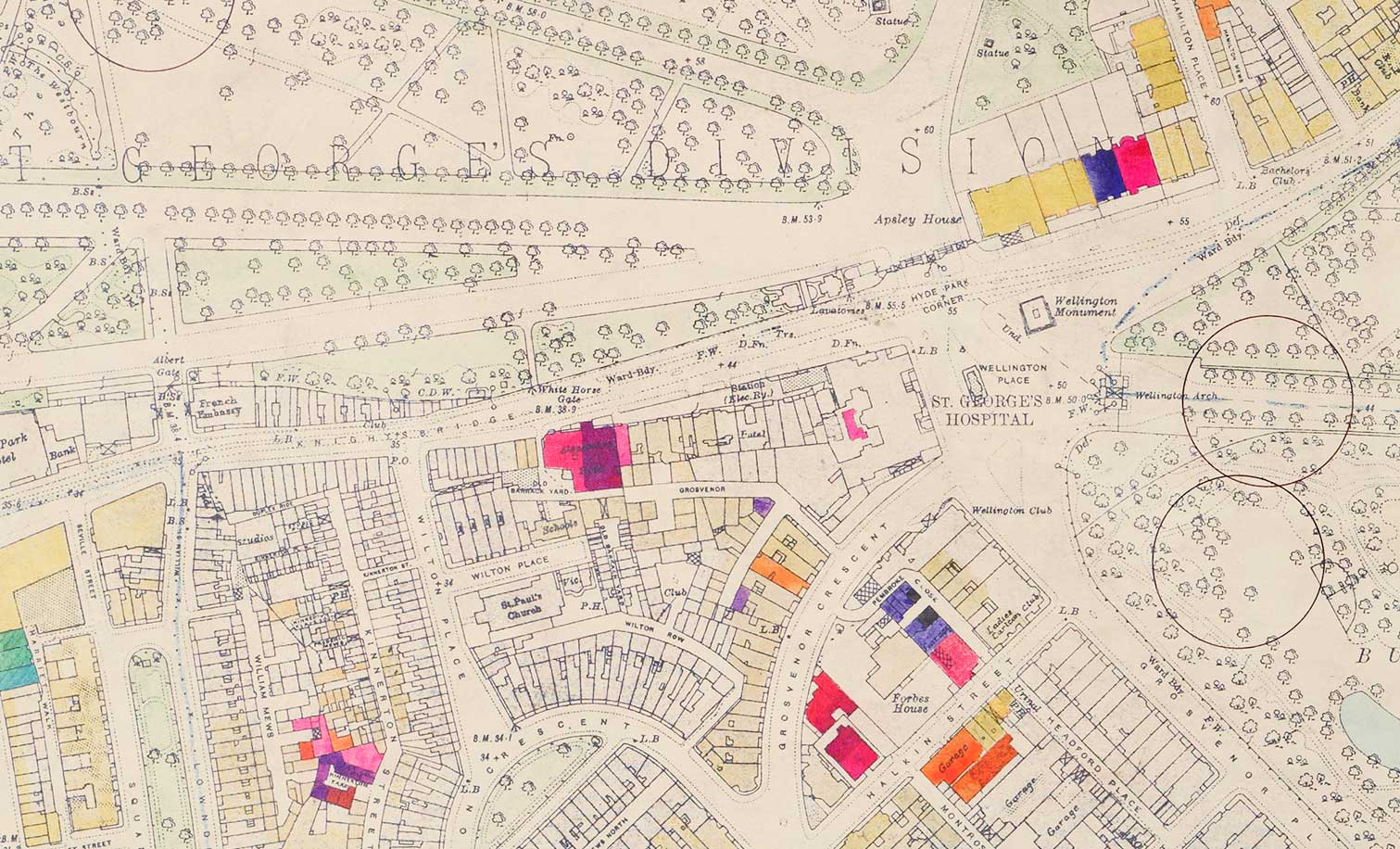
An article contained within the English Heritage file (ref: ACC/3499/SL/01/0700) – The Art Deco Interior Worldwide by Patricia Bayer 1990, talks about the premises at Knightsbridge:
It '…displayed paintings by Marie Laurencin, drawings by Raoul Dufy and Henri Matisse, Lalique light fixtures, rugs by Bruno da Silva Bruhns and also some carpets of her own design, hand-knotted in China.'
'Betty Joel…looked elsewhere for her designs – forward, not back, and also to the Continent, Paris art and design of the mid-1920s not only influencing her own creations, but also being sold by her London showroom…The simple, smart furniture which they sold – largely characterized by curved edges…was sheathed in rich, often exotic wood veneer; offered for sale with these pieces were area rugs with abstract motifs, smart dressing-table mirrors and other modish accessories.'
'…it was her primary aim to design ‘for the working woman’. In accordance with this, her furniture designs were eminently comfortable and practical, with few corners to dust; likewise, her interiors sometimes featured veneered walls without right angles – just smooth, rounded surfaces that resembled many of the Streamline Moderne interiors of 1930s New York.'
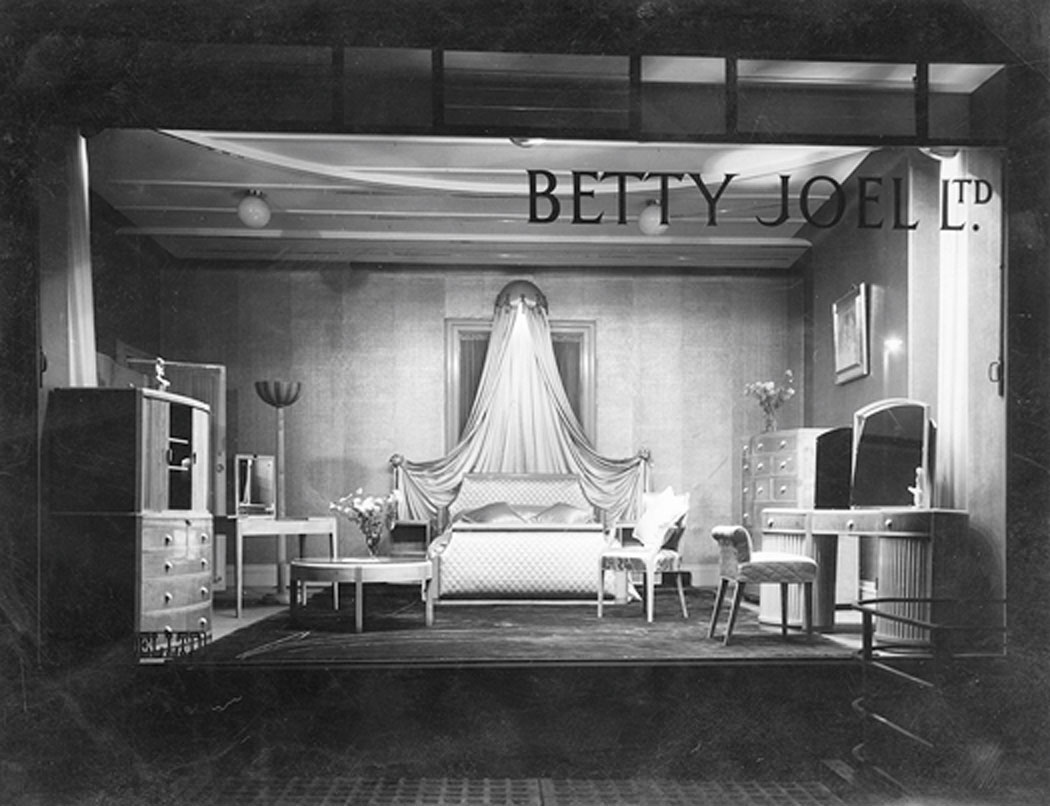
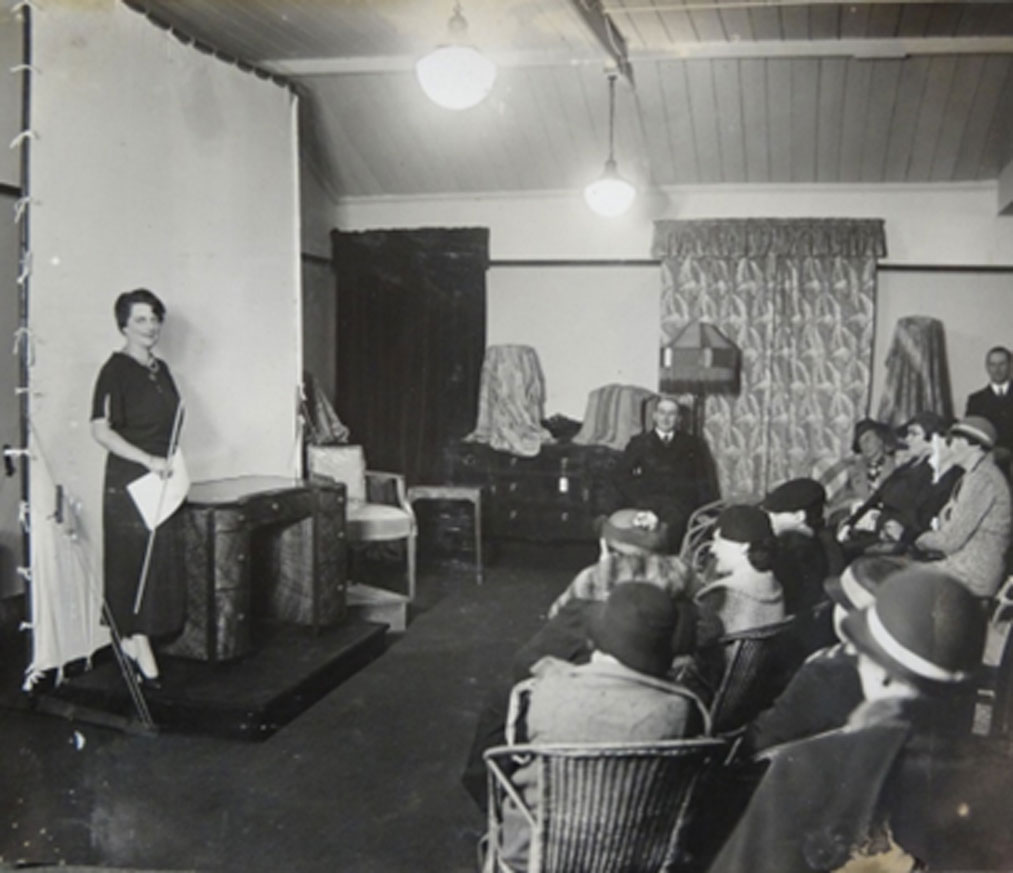
It is not known exactly where this photograph was taken but Betty did demonstrations on how furniture would improve the lives of women, and this looks like one such typical event.
The Daily Express Building
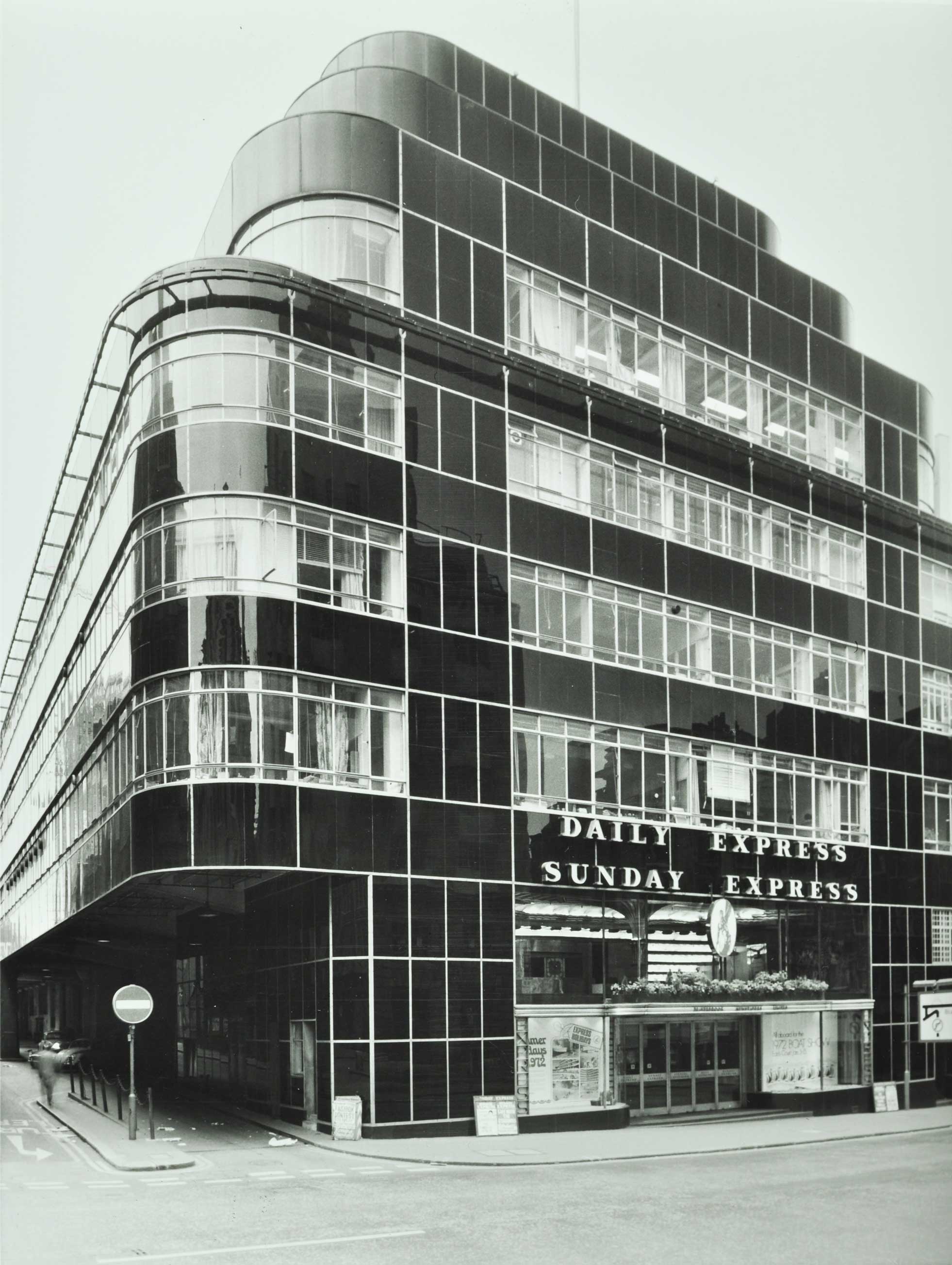
The Art Deco style building at 120-129 Fleet Street was designed in 1932 by Ellis and Clarke with Sir Owen Williams to serve as the headquarters of the Daily Express and Sunday Express newspapers. Betty Joel Ltd. designed the furniture for the foyer inside its original incarnation by Robert Atkinson as seen on the RIBA website. The furniture had a stainless-steel theme which no longer survives, but the doors that were produced still exist to some extent. The interior had a palette of green, black and blue with chairs upholstered in an emerald-green leather.
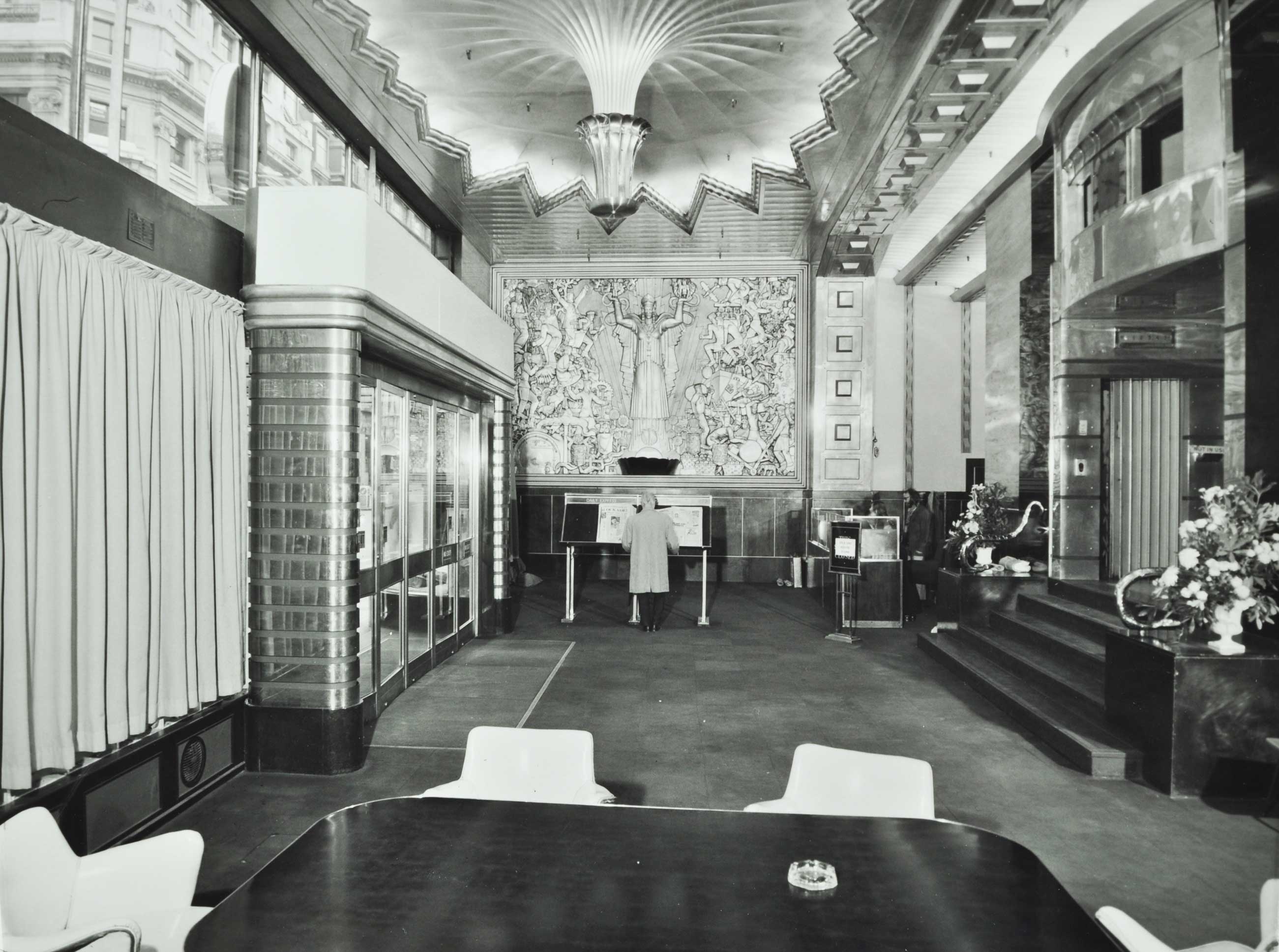
Hotel commissions
Amongst the extensive commissions they were receiving by the 1930s this included work for high-end hotels such as Claridges, St James’s Court, and the Savoy.
An image of suite nos. 523-526 at Claridges Hotel after redesign by Betty Joel Ltd. can be seen in the photograph here dated 1932.
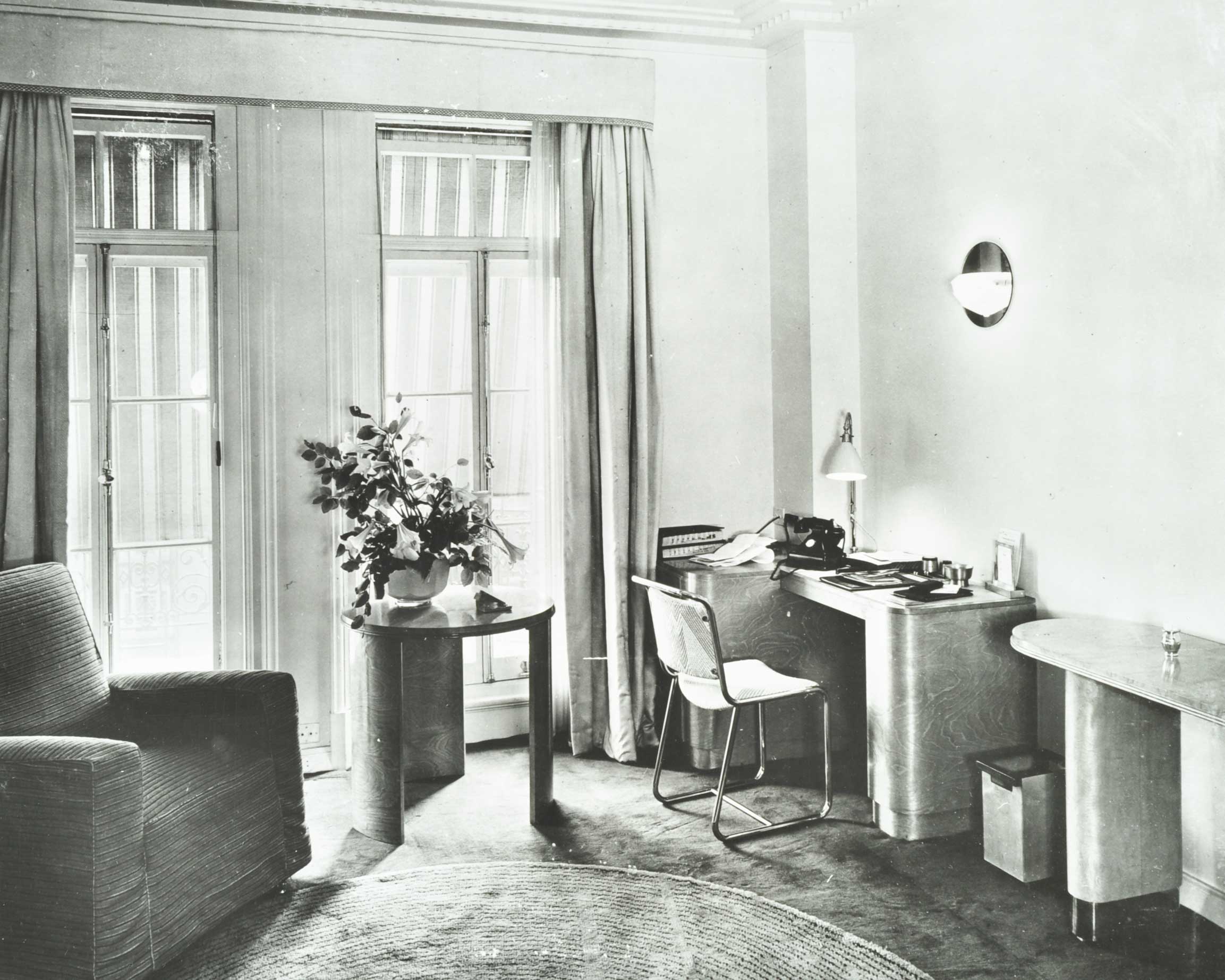
At Saint James’s Court Hotel, Buckingham Gate, Betty Joel Ltd. were contracted to recarpet the hotel and supply some of the furniture.
Betty’s diary entry from March 8, 1929 refers to a visit there: 'In the morning I went to St James Crt with samples and carpets. I seemed to have spent hours there. The Queensland Oak pilasters – which Roberts the architect used at our instigation – are going to look magnificent…After hours of discussion about wall color [sic] curtains and carpets, I came away feeling a little dizzy but delighted at getting the job!'
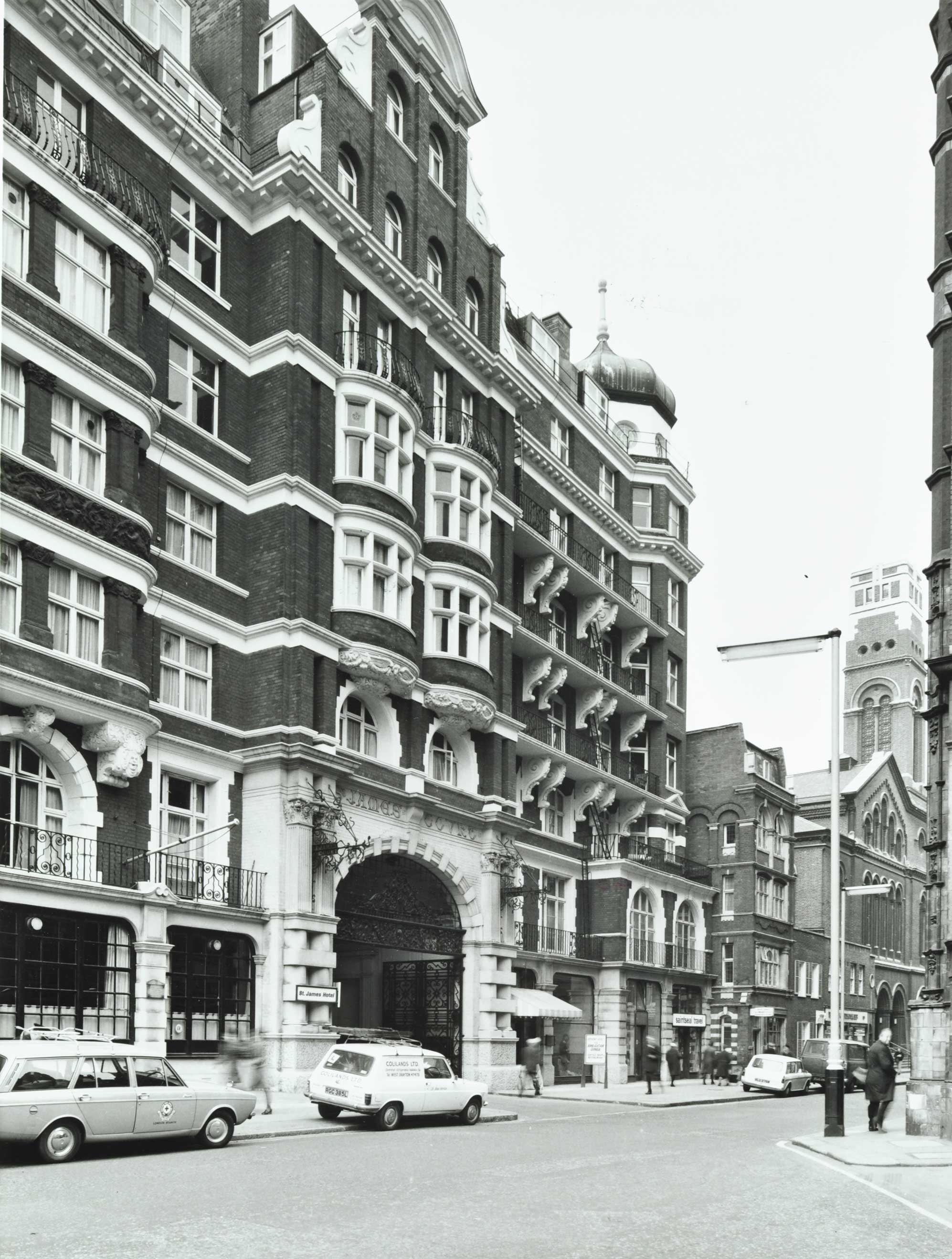
27 Harley Street
27 Harley Street was the address of Frederick Williamson-Noble, an ophthalmologist who was involved with developing the contact lens.
His consulting room can be viewed in the photographs below from LMA’s London Picture Archive. The central desk, chair and wastepaper basket were designed by Betty Joel Ltd. and A.B. Llewellyn Roberts in 1929 and have been preserved in the V&A collection. They also designed the panelling, cabinets and doors for this room and likely incorporated the seat into the bookcase at Noble’s request, as perhaps a beloved piece of furniture Betty was asked to adapt.
The photographs in the London County Council photograph library, available on LMA’s London Picture Archive, are dated later in 1975, but much of the original fittings were still present at the time they were taken.
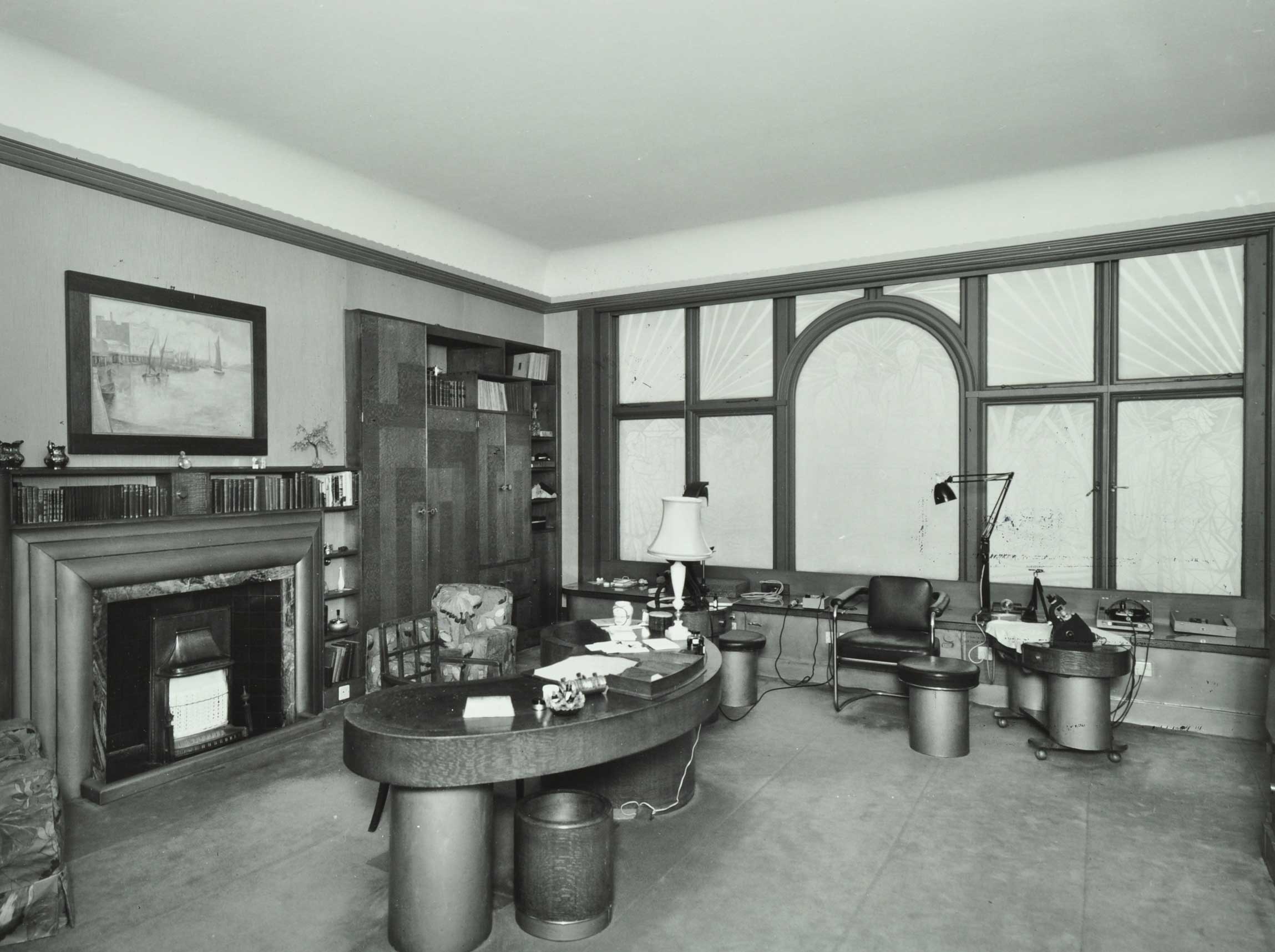
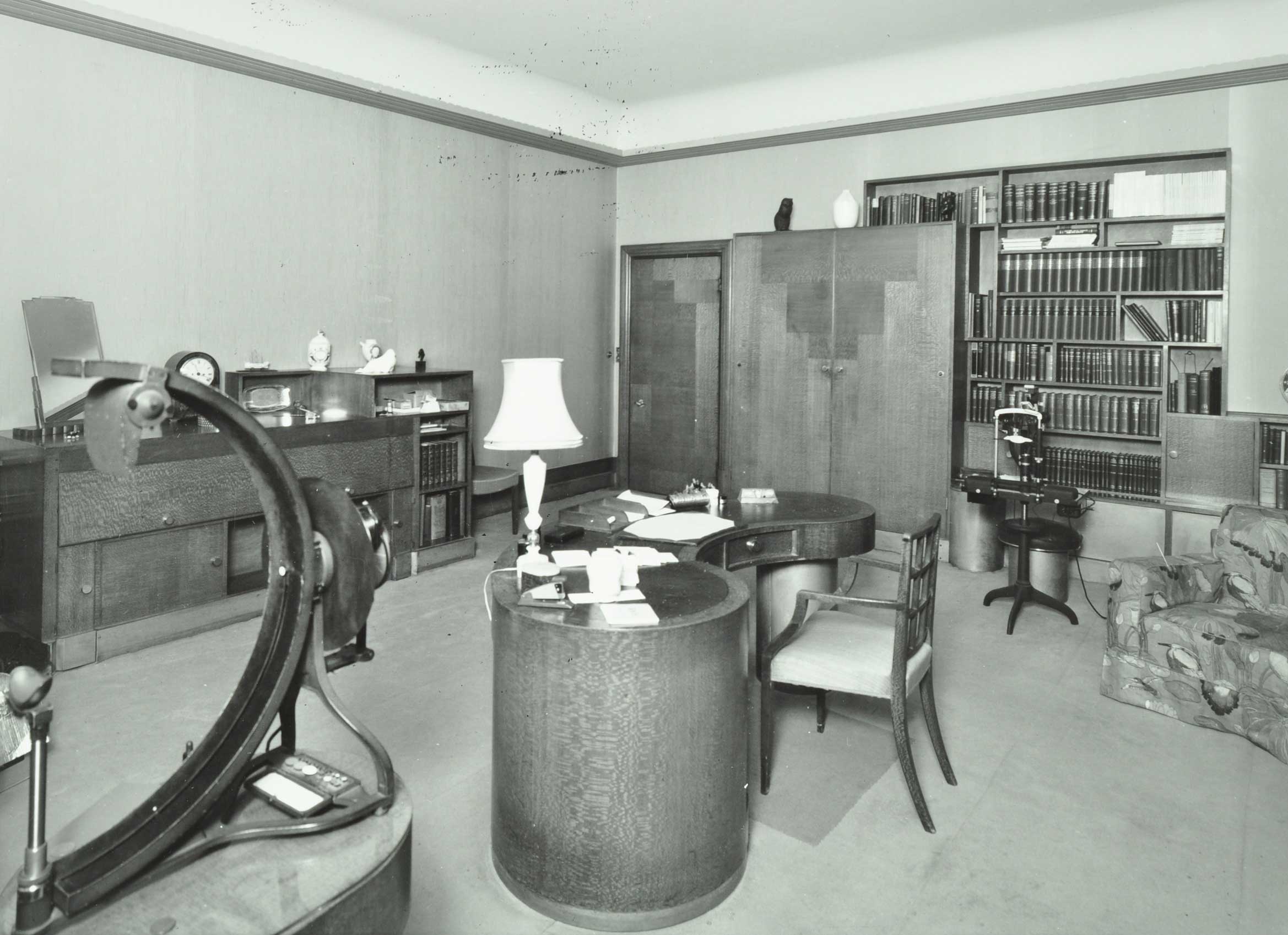
Winding up of the Company
The tradename Betty Joel Ltd. was wound up in 1938. Documents of the High Court of Chancery, held at The National Archives, order a reduction in capital. They had gone their separate ways and Betty had set up on her own as an independent designer with David continuing the business as David Joel Ltd. Their divorce was finalised in 1946.
In conclusion, it only seems right to finish here with Betty’s words:
"Every time we move our homes, and every time we pass through various changes of fashion, we lose something lovely that has served us well. For the old and the new do not mix, we are told, and so every time we shed some of the things we have grown fond of, in the expectation that we shall thereby improve our surroundings. But the old and the new can be reconciled, and should be, if we wish to remain true to ourselves." Betty Joel, A House and A Home (1935).
Repositories that hold further textual information:
V&A (Betty Joel’s diaries 1929-1932 and examples of her work)
National Library of Scotland
National Portrait Gallery of Scotland
George Watson’s College, Edinburgh
Museum of the Home (examples of Betty Joel’s work)